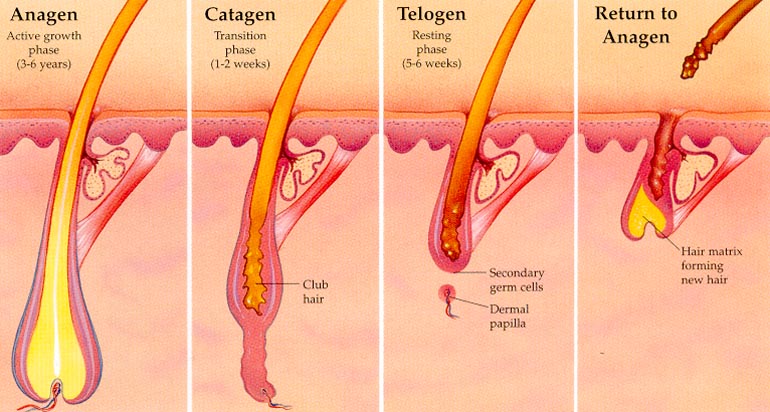If you’re interested in laser hair removal, it’s important, as a first step, to learn how it works. Laser hair removal technology is the use of an invisible beam of light and a constant source of heat that penetrates the hair follicle, disabling and then destroying it at its root while preserving the surrounding skin.
The procedure of removing unwanted hair is simply targeting the follicle and then directing the laser beam at its root. The hair removal process begins as the laser beam finds the hair follicle that it is targeting by first finding the melanin (the dark color of the hair).
Who can benefit from Laser Hair Removal?
Laser hair removal works best on those people with dark hair and fair skin.
Melanin is also found in skin, so those people with dark skin either from suntans or by birth will not be ideal candidates for laser hair removal. Neither will red headed or light blond haired people — simply because the laser is solely attracted to the darkness of the hair.
Laser hair removal is most successful when the hair is in its anagen phase (the phase when a hair follicle is its active growth). This phase lasts several years — 85% of our hair is in that phase at any given time. During this phase, the hair is easily targeted and more easily destroyed.
<h2>Are there any problems with Laser Hair Removal?</h2>
Unlike other hair removal methods such as electrolysis, waxing and, of course, shaving, laser hair removal is the most state-of-the-art and high-tech method in removing unwanted hair for longer (and even indefinite) periods of time. It is the only proven method available for easily removing hair from mass areas of the body including back, chest, legs and face. Laser hair removal is effective, precise and cost efficient.
The laser simply and directly pinpoints the root of the hair and removes it from the body. Although the process is precise and beneficial, it can be irritating to the skin — therefore it is important that the surrounding skin be cooled with a gel, a spray or a cooling device throughout the procedure. These cooling systems prevent the laser beam from causing harm or discomfort to the surrounding skin.
Types of Lasers
There are currently four types of lasers used for hair removal:
- Alexandrite – such as the Candela GentleLase Plus
- Ruby – such as the EpiTouch or Epilaser
- Diode – such as the Coherent Light Sheer
- ND and LP ND Yag – such as the Candela GentleYag and the Altus Cool Glide
Each of these techniques is FDA-approved and proven effective, fast and safe methods for successful hair removal and permanent hair reduction.
What to look for
Although it is the work of the laser that removes the hair follicle, successful laser hair removal depends upon the skill and knowledge of the technician who manipulates and maneuvers the laser. That is, once the laser is selected, it is the mastery of the technician that will yield the best results.
Now let’s better understand the technique involved. Words like <span>pulse</span>, <span>fluency</span> and <span>time</span> are imperative to you, the consumer. These techniques will ensure that your experience is comfortable and effective.
For instance, long pulsed lasers are considered to be the safest. Energy and fluency levels of the laser can be specified depending on your personal skin type. The time allowed between pulses of light allows the skin and follicle to cool for longer periods of time, making your experience more pleasant. The size of the area on your skin’s surface affects the speed and penetration of the laser — a larger area allows the technician to go deeper into the root of the hair follicle, which can give you better results per session.
Laser hair removal is not a one-time procedure. But, in just a few sessions, you can feel like a different person. The power of the laser is unchallenged by any other hair removal method available.


